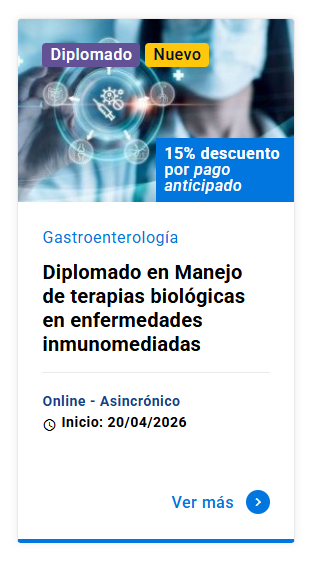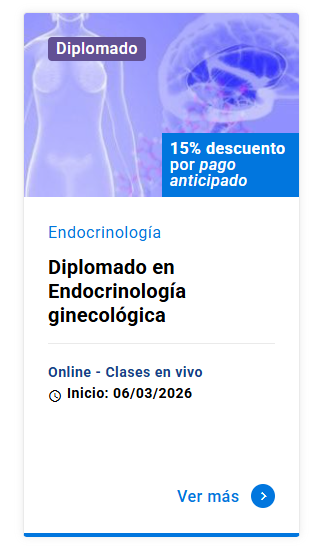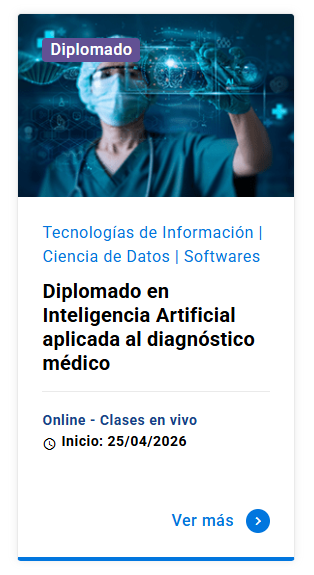Riesgos asociados a los hijos de mujeres con trastornos alimentarios
DOI:
https://doi.org/10.11565/arsmed.v43i3.1338Palabras clave:
trastorno de alimentación e ingesta, anorexia nervosa, bulimia nervosa, madre, infancia.Resumen
Resumen Se analiza literatura sobre la influencia materna que los trastornos alimentarios y de la ingestión de alimentos (TAI) tienen sobre el desarrollo psíquico de los hijos. De 1.096 artículos encontrados en PubMed, PsycINFO, Scielo, ProQuest Health & Medical Collection, 32 aportan información relevante organizada en 6 categorías: 1-Alimentación; 2-Antropometría; 3-Percepción materna de los hijos; 4-Percepción de los hijos hacia sus madres; 5-Estilo parental; 6-Psicopatología de los hijos.
La evidencia muestra influencia de TAI materno sobre el psico - desarrollo de los hijos. Se discuten mecanismos involucrados y se sugiere seguir avanzando en investigación y clínicaDescargas
Citas
Agras S, Hammer L, & McNicholas F. (1999). A prospective study of the influence of eatingâ€disordered mothers on their children. International Journal of Eating Disorders 25, 253-262. DOI: https://doi.org/10.1002/(SICI)1098-108X(199904)25:3<253::AID-EAT2>3.3.CO;2-Q
Barona M, Nybo Andersen AM, & Micali N. (2016). Childhood psychopathology in children of women with eating disorders. Acta Psychiatrica Scandinavica 134, 295-304. DOI: https://doi.org/10.1111/acps.12616
Barona M, Taborelli E, Corfield F, Pawlby S, Easter A, Schmidt U & Micali N. (2017). Neurobehavioural and cognitive development in infants born to mothers with eating disorders. Journal of Child Psychology and Psychiatry 58, 931-938. DOI: https://doi.org/10.1111/jcpp.12736
Bould H, Sovio U, Koupil I, Dalman C, Micali N, Lewis G, & Magnusson C. (2015). Do eating disorders in parents predict eating disorders in children? Evidence from a Swedish cohort. Acta Psychiatrica Scandinavica 132, 51-59. DOI: https://doi.org/10.1111/acps.12389
Brinch M, Isager T, & Tolstrup K. (1988). Anorexia nervosa and motherhood: reproduction pattern and mothering behavior of 50 women. Acta Psychiatrica Scandinavica 77, 611-617. DOI: https://doi.org/10.1111/j.1600-0447.1988.tb05175.x
Cardona Cano S, Tiemeier H, Van Hoeken D, Tharner A, Jaddoe VW, Hofman A & Hoek HW. (2015). Trajectories of picky eating during childhood: a general population study. International journal of eating disorders 48, 570-579. DOI: https://doi.org/10.1002/eat.22384
Cherlin AJ. (2010). Demographic trends in the United States: A review of research in the 2000s. Journal of Marriage and Family 72, 403-419. DOI: https://doi.org/10.1111/j.1741-3737.2010.00710.x
Cimino S, Cerniglia L, Porreca A, Simonelli A, Ronconi L, & Ballarotto G. (2016). Mothers and fathers with binge eating disorder and their 18–36 months old children: longitudinal study on parent–infant interactions and offspring’s emotional–behavioral profiles. Frontiers in psychology 7, 580. DOI: https://doi.org/10.3389/fpsyg.2016.00580
De Barse L, Tharner, A, Micali N, Jaddoe, V, Hofman A, Verhulst, FC, Tiemeier H & Jansen P (2015). Does maternal history of eating disorders predict mothers' feeding practices and preschoolers' emotional eating? Appetite 85, 1-7. DOI: https://doi.org/10.1016/j.appet.2014.10.031
Easter A, Howe LD, Tilling K, Schmidt U, Treasure J, & Micali N. (2014). Growth trajectories in the children of mothers with eating disorders: a longitudinal study. BMJ open, 4 e004453. DOI: https://doi.org/10.1136/bmjopen-2013-004453
Easter A, Naumann U, Northstone K, Schmidt U, Treasure J, & Micali N. (2013). A longitudinal investigation of nutrition and dietary patterns in children of mothers with eating disorders. The Journal of pediatrics 163, 173-178. DOI: https://doi.org/10.1016/j.jpeds.2012.11.092
Evans J, & Grange DL. (1995). Body size and parenting in eating disorders: A comparative study of the attitudes of mothers towards their children. International Journal of Eating Disorders 18, 39-48. DOI: https://doi.org/10.1002/1098-108X(199507)18:1<39::AID-EAT2260180105>3.0.CO;2-I
Hoffman ER, Bentley ME, Hamer RM, Hodges EA, Ward DS, & Bulik CM. (2014). A comparison of infant and toddler feeding practices of mothers with and without histories of eating disorders. Maternal & child nutrition 10, 360-372. DOI: https://doi.org/10.1111/j.1740-8709.2012.00429.x
Kohut H. (2013). The analysis of the self: A systematic approach to the psychoanalytic treatment of narcissistic personality disorders. University of Chicago Press.
Kothari R, Solmi F, Treasure J, & Micali N. (2013). The neuropsychological profile of children at high risk of developing an eating disorder. Psychological Medicine 43, 1543-1554. DOI: https://doi.org/10.1017/S0033291712002188
Leverton TJ. (2003). Parental psychiatric illness: the implications for children. Current opinion in Psychiatry 16, 395-402. DOI: https://doi.org/10.1097/01.yco.0000079218.36371.78
Lewis S, Katsikitis M, & Mulgrew K. (2015). Like mother, like daughter? An examination of the emotive responses to food. Journal of health psychology 20, 828-838. DOI: https://doi.org/10.1177/1359105315573442
Lydecker JA, & Grilo CM. (2016). Fathers and mothers with eating-disorder psychopathology: Associations with child eating-disorder behaviors. Journal of psychosomatic research 86, 63-69. DOI: https://doi.org/10.1016/j.jpsychores.2016.05.006
Luyten P, & Fonagy P. (2015). The neurobiology of mentalizing. Personality Disorders: Theory, Research, and Treatment 6, 366. DOI: https://doi.org/10.1037/per0000117
McLaughlin KA, Gadermann AM, Hwang I, Sampson NA, Al-Hamzawi A, Andrade LH, & Caldas-de-Almeida, JM. (2012). Parent psychopathology and offspring mental disorders: results from the WHO World Mental Health Surveys. Br J Psychiatry 200, 290–299. DOI: https://doi.org/10.1192/bjp.bp.111.101253
McNicholas F. (1996). Eating psychopathology and its effect on pregnancy, infant growth and development. Irish Journal of Psychological Medicine 13, 67-69. DOI: https://doi.org/10.1017/S0790966700002469
Micali N, Stavola B, Ploubidis GB, Simonoff E, & Treasure J. (2014). The effects of maternal eating disorders on offspring childhood and early adolescent psychiatric disorders. International Journal of Eating Disorders 47, 385-393. DOI: https://doi.org/10.1002/eat.22216
Micali N, Rask CU, Olsen EM, & Skovgaard AM. (2016). Early predictors of childhood restrictive eating: a population-based study. Journal of Developmental & Behavioral Pediatrics 37, 314-321. DOI: https://doi.org/10.1097/DBP.0000000000000268
Mushquash AR, & Sherry SB. (2013). Testing the perfectionism model of binge eating in mother–daughter dyads: A mixed longitudinal and daily diary study. Eating behaviors 14, 171-179. DOI: https://doi.org/10.1016/j.eatbeh.2013.02.002
Palfreyman Z, Haycraft E, & Meyer C. (2013). Unintentional role models: links between maternal eating psychopathology and the modelling of eating behaviours. European Eating Disorders Review 21, 195-201. DOI: https://doi.org/10.1002/erv.2219
Papadopoulos FC, Karamanis G, Brandt L, Ekbom A, & Ekselius L. (2013). Childbearing and mortality among women with anorexia nervosa. International Journal of Eating Disorders 46, 164-170. DOI: https://doi.org/10.1002/eat.22051
Park RJ, Senior R, & Stein A. (2003). The offspring of mothers with eating disorders. European child & adolescent psychiatry 12, i110-i119. DOI: https://doi.org/10.1007/s00787-003-1114-8
Perrin EM, Von Holle A, Zerwas S, Skinner AC, Rebaâ€Harrelson L, Hamer RM.& Bulik, C. M. (2015). Weightâ€forâ€length trajectories in the first year of life in children of mothers with eating disorders in a large norwegian cohort. International Journal of Eating Disorders 48, 406-414. DOI: https://doi.org/10.1002/eat.22290
Rizzolatti G, & Craighero L. (2004). The mirror-neuron system. Annu. Rev. Neurosci 27, 169-192. DOI: https://doi.org/10.1146/annurev.neuro.27.070203.144230
Russell GFM, Treasure J, & Eisler I. (1998). Mothers with anorexia nervosa who underfeed their children: their recognition and management. Psychological Medicine 28, 93-108. DOI: https://doi.org/10.1017/S003329179700603X
Sadeh-Sharvit S, Zubery E, Mankovski E, Steiner E, & Lock JD. (2016). Parent-based prevention program for the children of mothers with eating disorders: Feasibility and preliminary outcomes. Eating disorders 24, 312-325. DOI: https://doi.org/10.1080/10640266.2016.1153400
Satyanarayana VA, Lukose A, & Srinivasan K. (2011). Maternal mental health in pregnancy and child behavior. Indian journal of psychiatry 53, 351. DOI: https://doi.org/10.4103/0019-5545.91911
Solmi F, Sallis H, Stahl D, Treasure J, & Micali N. (2013). Low birth weight in the offspring of women with anorexia nervosa. Epidemiologic reviews 36, 49-56. DOI: https://doi.org/10.1093/epirev/mxt004
Stein A, Murray L, Cooper P, & Fairburn CG. (1996). Infant growth in the context of maternal eating disorders and maternal depression: a comparative study. Psychological medicine 26, 569-574. DOI: https://doi.org/10.1017/S0033291700035649
Stein A, Woolley H, Cooper S, Winterbottom J, Fairburn CG, & Cortina-Borja M. (2006). Eating habits and attitudes among 10-year-old children of mothers with eating disorders: longitudinal study. The British Journal of Psychiatry 189, 324-329. DOI: https://doi.org/10.1192/bjp.bp.105.014316
Stein A, Woolley H, & McPherson K. (1999). Conflict between mothers with eating disorders and their infants during mealtimes. The British Journal of Psychiatry 175, 455-461. DOI: https://doi.org/10.1192/bjp.175.5.455
Valéry P. (1957). Oeuvres. 2 vols. Ed. Jean Hytier. Paris: Gallimard, Bibliothèque de la Pléiade.
Woodside DB, & Shekterâ€Wolfson LF. (1990). Parenting by patients with anorexia nervosa and bulimia nervosa. International Journal of Eating Disorders 9, 303-309. DOI: https://doi.org/10.1002/1098-108X(199005)9:3<303::AID-EAT2260090308>3.0.CO;2-3
Zerwas S, Von Holle A, Torgersen L, Reichbornâ€Kjennerud T, Stoltenberg C, & Bulik CM. (2012). Maternal eating disorders and infant temperament: findings from the Norwegian mother and child cohort study. International Journal of Eating Disorders 45, 546-555. DOI: https://doi.org/10.1002/eat.20983
Descargas
Publicado
Cómo citar
Licencia
Derechos de autor 2018 ARS MEDICA Revista de Ciencias Médicas

Esta obra está bajo una licencia internacional Creative Commons Atribución-CompartirIgual 4.0.
Los autores/as conservan sus derechos de autor y garantizan a la revista el derecho de primera publicación de su obra, la que estará simultáneamente sujeta a la Licencia CC BY-SA 4.0 (Ver declaración de Acceso Abierto).







